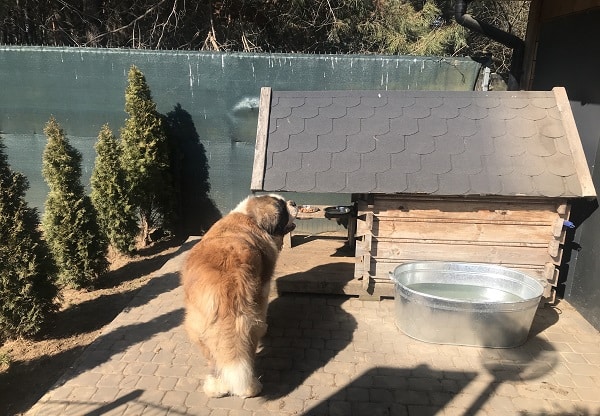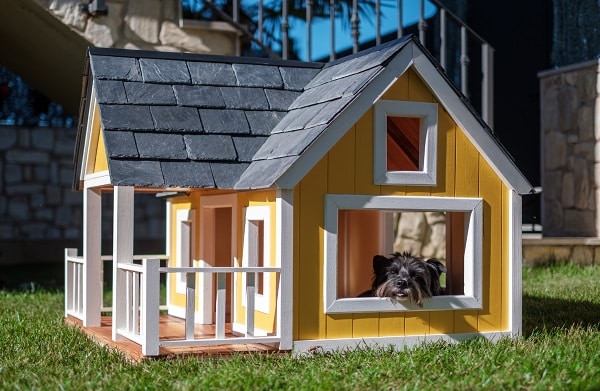Every dog owner understands the unique bond between humans and their furry friends. It goes beyond companionship; it’s about ensuring their comfort, safety, and happiness. A custom dog house not only serves as a protective shelter but also as an emblem of love and care. With the rising trend of tailored dog abodes, creating a dream space tailored to a pet’s individual needs becomes more than just a whimsical project; it’s a gesture of love.
Contents
Understanding Your Dog’s Needs

Before diving into the intricacies of design and materials, one must first gauge the specific needs of the dog. Every breed has its distinct characteristics, habits, and size, all of which play pivotal roles in determining the design of the dog house. For instance, a Husky might require better insulation compared to a Chihuahua, or a Dalmatian might need more space than a Beagle. Keeping these factors in mind ensures that the house resonates with the comfort requirements of its occupant.
The environment also plays a crucial role in shaping the design. For dogs living in tropical climates, adequate ventilation becomes paramount, while in colder regions, insulation takes precedence. Weather resistance is universally important. The last thing anyone would want is for the dog house to be a damp, cold, or stifling space. Instead, the goal is to create a haven where the pet feels secure and comfortable throughout the year.
Design Considerations

When conjuring up a design, the dog’s safety and comfort should be paramount. However, there’s room for creativity. Imagine a mini-porch where the dog can lounge on sunny days or a cute little window from where they can peek out. Integrating such elements not only adds aesthetic appeal but also enhances the overall functionality of the dog house, making it a truly bespoke space.
Opting for sustainable designs yields a plethora of benefits. By choosing materials that are both pet-friendly and environmentally sound, it ensures that the dog house stands the test of time without negatively impacting the environment. Sustainability might also mean crafting a design that can adapt as the dog grows, or one that can be easily repurposed if need be. After all, a dream dog house isn’t just about aesthetics; it’s about merging form and function seamlessly.
Location And Size

Selecting the perfect spot for the dog house is more than just about aesthetics. It’s crucial to choose a location that offers safety and protection from the elements. Placing the dog house in a shaded spot can provide relief during hot summer days, while ensuring it’s elevated from the ground can prevent water seepage during rainy seasons. Additionally, positioning the entrance away from prevailing winds can keep the interiors warmer during colder months.
Size is another pivotal factor. A dog house must provide ample space for its resident to move, turn, and lie down comfortably. At the same time, it shouldn’t be too roomy; a cozier space helps retain the dog’s body heat, especially in colder climates. It’s essential to measure the dog’s length, width, and height and add a few extra inches to each dimension to determine the perfect size. After all, the goal is to strike a balance between spaciousness and snugness.
Material Selection

When it comes to materials, the choices are abundant, but each comes with its set of advantages and considerations. Wood, for instance, remains a popular choice due to its natural insulation properties and aesthetic appeal. It provides a classic look and can be painted or stained to fit any design aesthetic. However, it’s crucial to opt for non-toxic paints and finishes to ensure the dog’s safety.
Plastic, on the other hand, offers durability and resistance to pests like termites. It’s also relatively low-maintenance and can be molded into various shapes and designs. Metal, though less common, can be a good choice for its longevity, especially when it’s coated to prevent rust. No matter the material chosen, it’s essential to ensure it provides comfort, durability, and safety for the pet.
Insulation And Weatherproofing

For those residing in colder regions, insulation becomes a non-negotiable aspect of the dog house design. Incorporating proper insulation not only ensures warmth but also provides a comfortable space for dogs to retreat. Materials like foam or reflective barriers can be effective in preventing heat loss and keeping the interiors cozy.
Weatherproofing extends the life of the dog house and guarantees a safe and dry space for the pet. Whether it’s sealing the edges, using weather-resistant materials, or incorporating a slanted roof for rain runoff, every measure contributes to the longevity and functionality of the structure. Remember, a well-insulated and weatherproofed dog house is more than just a shelter; it’s a warm and welcoming haven for man’s best friend.
Interior Comfort

Within the confines of a dog house, the interior plays a crucial role in offering comfort. One primary consideration is bedding. Opting for materials that are durable, easy to clean, and provide the right amount of cushioning can make a world of difference. Some dog owners lean towards cedar shavings due to their natural flea-repelling properties, while others might choose plush fabrics for added warmth.
Beyond bedding, other elements can heighten a pet’s comfort. Consider installing a small water bowl that’s anchored to avoid spillage or even a section for toys. Windows can also serve a dual purpose by providing ventilation and allowing natural light, enhancing the overall environment of the space. These details, while minor, collectively contribute to the dog’s overall well-being and happiness.
Maintenance And Upkeep

To ensure the longevity of the dog house, regular maintenance checks are pivotal. This involves inspecting the structure for any signs of wear and tear. Broken parts, rotting wood, or any sharp edges can pose risks and should be addressed promptly. Prioritizing such inspections will ensure the pet’s safety and extend the life of their dwelling.
Additionally, hygiene stands paramount. Cleaning the dog house at regular intervals, whether it’s washing the bedding or scrubbing the floors and walls, ensures a healthy environment. For wooden dog houses, periodic treatments can prevent decay and pest infestations. Similarly, for plastic or metal structures, checking for and rectifying any corrosion or damage will aid in preserving the house’s integrity.
The Bottom Line
Crafting a dream dog house is a testament to the love and care a pet owner holds for their canine companion. This endeavor, while demanding attention to detail, offers rewards that go beyond a mere structure. It presents a sanctuary, a space of comfort, and a haven of safety. By prioritizing the needs of the dog, considering environmental factors, and dedicating time for maintenance, one can create a lasting abode that resonates with warmth and love.


